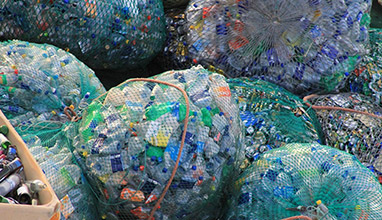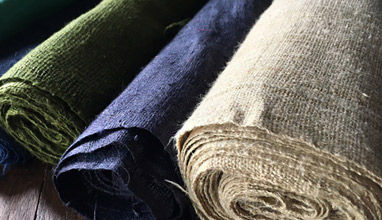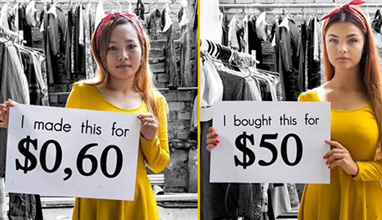What Technologies Will Change the Fashion Industry
In the not-so-distant future, the functionality of clothing will encompass much more than just appearance. Clothes will be able to analyze our condition using smart materials and numerous sensors, and they will be able to react and alter in response to environmental situations and the user's preferences. However, before that day comes, brands and retailers must address the need to modernize their business models in order to fulfill present requirements and constraints.

AR/VR
The season of fashion shows has begun, which traditionally gather tens of thousands of people, but in conditions of social distancing this became impossible and Fashion Weeks were forced to switch to an online format. Despite the fact that many well-known brands declined to engage in this format, others considered it as an opportunity to use new technology to gain attention to themselves. Closed fashion shows for the “chosen ones” were replaced by shows online on the organizers’ own platforms and social networks, and augmented and virtual reality became the key technologies for creating content for online fashion shows.
The main goal of these shows was to create a sense of presence and involvement.
Past events have caused a lot of criticism, but given the time frame for which it was necessary to create a new format and the very fact of a paradigm shift, what we saw inspires optimism about future events.
Another important advantage of online events and digital content was environmental friendliness. As a result, Sweden, which had previously refused to host Fashion Weeks due to this, has proclaimed its comeback to the top of the fashion world in a new format. Collections displayed in this manner may not yet exist in physical reality but will be manufactured after the sale in the number required by the customer. A virtual fitting and personal profile pictures will allow you to receive the clothes you want in your own size.
Another popular trend in the development of VR/AR technology is the imitation of offline shopping online, a kind of "Google trip" format for shopping, with video communication, profile photos, virtual fitting, etc.
Artificial Intelligence
Manufacturers cannot afford to create products that are not in demand by consumers. Predictive artificial intelligence, using image recognition and machine learning technologies, makes it possible to gather information on current trends in color, fit, and materials, as well as to predict demand for various categories of goods, taking into account geolocation and seasonality.
Labeling
Loss and theft in the logistics chain, as well as the fight against counterfeit items, are two other major concerns for the business. All of these issues can be solved with the use of specific platforms, blockchain, RFID, and other logistics management platforms. Digital transparency allows you to see the complete history of a product's manufacture, all the way up to the accountable factory employee, which helps to decrease manufacturing defects and assure the authenticity of the items you buy.
Recycling and eco-fashion
The annual volume of textile waste is increasing year after year, reaching 92 million tons in 2019, posing an increasing environmental danger. Experts estimate that by 2030, this quantity will have risen to 150 million tons, or 17.5 kg for every person on the planet. The answer to these problems has been a paradigm shift in the expectations of consumers, who feel responsible and demand the same from brands.
Brands may now participate in sustainable manufacturing that uses recycled materials and end-of-life products more quickly and easily thanks to technological advancements.
Manufacturers must locate, track, and validate the composition of collected materials in order for new products to take into consideration the basic features of these materials in order to develop new materials from recycled items.
Buy-back and re-sale models are actively developing, for this brands need to track the history of sales and first-time buyers. Another embodiment of the same trend is the clothing sharing model.
Simulation of tactile properties
According to research, up to 80% of purchasers believe that touching an item before purchasing is necessary. This is one of the main obstacles to the growth of online retail, but it is very likely that it will be overcome in the future. A number of companies and research organizations are developing technology that will allow them to replicate and convey a product's physical qualities over the internet.
SoftWear or smart clothes
Looking ahead, it appears that we will increasingly treat our clothing as software that can be altered and updated, and not as hardware that becomes obsolete and goes to the trash. For example, shoes with a changeable top and clothes that grow with the user.
We can already see the explosive growth of smart clothing with numerous sensors that collect various data and suggest the best ways to improve performance and reduce injuries. So, the new model of Nike sneakers will analyze and tell you about what mistakes you make when your foot touches the ground.
The personalisation trend also opens up a lot of possibilities; it's possible that we'll soon be able to purchase extra modifications and upgrades for our items using a mobile app and have them printed at home using a 3D printer.
Similarly, materials and fabrics will change and meet the new technology. More durable materials that require less maintenance, are easier to recycle, or degrade more quickly will be developed. Fabrics consisting of flexible conductors that can change colors or respond to changing weather in real time are already being developed by researchers.
Now let's imagine clothing made of fabric that can protect you from bacteria, viruses, and physical harm? Or, for example, could generate extra energy? Would you like to buy a superhero costume?
Hits: 10960 | Leave a comment












